Selective Immunosuppression Targeting the NLRP3 Inflammasome Mitigates the Foreign Body Response to Implanted Biomaterials While Preserving Angiogenesis
- PMID: 37846971
- PMCID: PMC11469290
- DOI: 10.1002/adhm.202301571
Selective Immunosuppression Targeting the NLRP3 Inflammasome Mitigates the Foreign Body Response to Implanted Biomaterials While Preserving Angiogenesis
Abstract
Medical devices are a mainstay of the healthcare industry, providing clinicians with innovative tools to diagnose, monitor, and treat a range of medical conditions. For implantable devices, it is widely regarded that chronic inflammation during the foreign body response (FBR) is detrimental to device performance, but also required for tissue regeneration and host integration. Current strategies to mitigate the FBR rely on broad acting anti-inflammatory drugs, most commonly, dexamethasone (DEX), which can inhibit angiogenesis and compromise long-term device function. This study challenges prevailing assumptions by suggesting that FBR inflammation is multifaceted, and selectively targeting its individual pathways can stop implant fibrosis while preserving beneficial repair pathways linked to improved device performance. MCC950, an anti-inflammatory drug that selectively inhibits the NLRP3 inflammasome, targets pathological inflammation without compromising global immune function. The effects of MCC950 and DEX on the FBR are compared using implanted polycaprolactone (PCL) scaffolds. The results demonstrate that both DEX and MCC950 halt immune cell recruitment and cytokine release, leading to reduced FBR. However, MCC950 achieves this while supporting capillary growth and enhancing tissue angiogenesis. These findings support selective immunosuppression approaches as a potential future direction for treating the FBR and enhancing the longevity and safety of implantable devices.
Keywords: NLRP3 inflammasome; biomaterials; dexamethasone; foreign body responses; implantable devices.
© 2023 The Authors. Advanced Healthcare Materials published by Wiley-VCH GmbH.
Conflict of interest statement
The authors declare no conflict of interest.
Figures
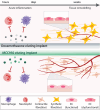


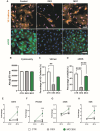
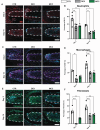
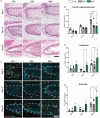
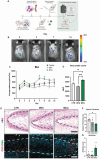
Similar articles
-
Dapansutrile OLT1177 suppresses foreign body response inflammation while preserving vascularisation of implanted materials.J Mater Chem B. 2024 Jul 31;12(30):7334-7347. doi: 10.1039/d4tb00705k. J Mater Chem B. 2024. PMID: 38973614
-
Prevention of the foreign body response to implantable medical devices by inflammasome inhibition.Proc Natl Acad Sci U S A. 2022 Mar 22;119(12):e2115857119. doi: 10.1073/pnas.2115857119. Epub 2022 Mar 17. Proc Natl Acad Sci U S A. 2022. PMID: 35298334 Free PMC article.
-
Selective NLRP3 Inflammasome Inhibitor MCC950 Suppresses Inflammation and Facilitates Healing in Vascular Materials.Adv Sci (Weinh). 2023 Jul;10(20):e2300521. doi: 10.1002/advs.202300521. Epub 2023 May 7. Adv Sci (Weinh). 2023. PMID: 37150865 Free PMC article.
-
Target of MCC950 in Inhibition of NLRP3 Inflammasome Activation: a Literature Review.Inflammation. 2020 Feb;43(1):17-23. doi: 10.1007/s10753-019-01098-8. Inflammation. 2020. PMID: 31646445 Review.
-
Therapeutic potential of MCC950, a specific inhibitor of NLRP3 inflammasome.Eur J Pharmacol. 2022 Aug 5;928:175091. doi: 10.1016/j.ejphar.2022.175091. Epub 2022 Jun 14. Eur J Pharmacol. 2022. PMID: 35714692 Review.
References
-
- Zhang D. H., Chen Q., Shi C., Chen M. Z., Ma K. Q., Wan J. L., Liu R. H., Adv. Funct. Mater. 2021, 31, 2007226.
-
- Chandorkar Y., Ravikumar K., Basu B., ACS Biomater. Sci. Eng. 2019, 5, 19. - PubMed
-
- Veiseh O., Doloff J. C., Ma M., Vegas A. J., Tam H. H., Bader A. R., Li J., Langan E., Wyckoff J., Loo W. S., Jhunjhunwala S., Chiu A., Siebert S., Tang K., Hollister‐Lock J., Aresta‐Dasilva S., Bochenek M., Mendoza‐Elias J., Wang Y., Qi M., Lavin D. M., Chen M., Dholakia N., Thakrar R., Lacík I., Weir G. C., Oberholzer J., Greiner D. L., Langer R., Anderson D. G., Nat. Mater. 2015, 14, 643. - PMC - PubMed
Publication types
MeSH terms
Substances
Grants and funding
LinkOut - more resources
Full Text Sources
Medical

